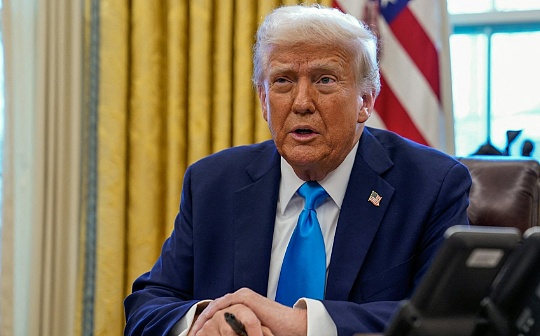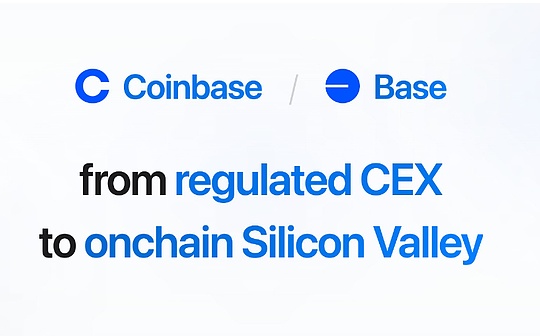
Author: Spirit, Bitchain Vision
Trump signed an executive order at 8 a.m. Beijing time on March 7, 2024 to establish a strategic Bitcoin reserve and digital asset reserve library, marking the official inclusion of Bitcoin in the national strategic asset system.This historic move not only gives Bitcoin national strategic significance, but also triggers widespread discussions on global crypto market volatility and geopolitical competition.
1. Policy background and significance
The executive order signed by Trump positioned Bitcoin as a national strategic asset, aiming to consolidate the United States’ financial dominance in the era of digital currency and seize the initiative in the formulation of global crypto asset rules.Against the backdrop of the dollar dominance facing the challenge of de-dollarization and the scale of Treasury bonds exceeding $34 trillion, the scarcity of Bitcoin is seen as a modern tool to hedge against inflation and debt crises, similar to “digital gold.”This move not only improves the legitimacy of Bitcoin, but may also push the global regulatory framework to tilt towards the United States and attract more institutional investors to enter the market.
2. The operation mechanism of strategic Bitcoin reserves and digital asset reserves
According to David Sacks, the White House AI and cryptocurrency director, the core mechanism of this policy is as follows:
Strategic Bitcoin Reserve:
-
Initial Scale: Based on approximately 198,000 Bitcoins held by the U.S. government (derived from criminal and civil confiscation procedures), the total value is approximately US$17.3 billion at the current price ($87,700 per coin).
-
How to operate: The government is authorized to explore ways to obtain more Bitcoin without increasing the burden on taxpayers, but it is clear that it will not buy actively.The executive order requires a comprehensive audit of holdings and stipulates that Bitcoin is not sold as a store of value, reducing potential selling pressure of about $18 billion (estimated by Coinbase Director Conor Grogan).
Mechanism Features:
-
Do not rely on fiscal appropriations and avoid direct market intervention.
-
Emphasize “responsible management” to reduce market selling pressure through long-term holdings and strengthen Bitcoin’s store of value.
3. The impact of policies on the market and global landscape
Market Influence
-
Short-term fluctuations: A few days before the policy was announced, the market experienced a FOMO effect, and the price of Bitcoin once soared to $95,000, but after the details were implemented this morning, it fell back to $84,667, reflecting investors’ disappointment with the limited policy scope (only forfeiture of assets and no large-scale purchase).
-
Long-term positives: Matt Hougan, chief investment officer of Bitwise, pointed out that government positions reduce selling pressure and endorsement of Bitcoin countries, “extremely beneficial” its long-term value.Local mining industries (such as Riot Blockchain) and custodians (such as Coinbase) may cooperate in depth with the government to reconstruct the industrial chain structure.
Global competitive landscape
-
Geo-strategic signal: The US move may stimulate other countries to follow suit and form a competitive landscape for Bitcoin reserves.For example, China may indirectly hold Bitcoin through Hong Kong, which Russia may use to bypass SWIFT sanctions, and small countries such as El Salvador use it as a sovereign asset.
-
Financial strategy adjustment: Against the backdrop of increasing global economic uncertainty, Bitcoin may become part of the “mixed reserve system” (gold, US dollar, and Bitcoin coexist).
4. Latest crypto asset price changes and market analysis
As of March 7, 2025, after the issuance of Trump’s executive order, the crypto asset market has experienced significant fluctuations and has shown a downward trend in the short term.The following is the latest data:
Bitcoin (BTC)
Price: About 3% drop in 2 hours to about $87,000 per coin
Reason: The market is disappointed that the government has not purchased Bitcoin on a large scale, and macro pressure (such as the Federal Reserve’s hawkish policy) has caused funds to flow out of high-risk assets.
Ethereum (ETH)
Price: 4% drop in 2 hours to about $2,160.
Other crypto assets (Altcoins)
Trend: Some altcoins fell by as much as 60% from their 2025 highs, and the market showed the characteristics of “severe differentiation”. Bitcoin is relatively stable, and altcoins are under obvious pressure.
Forecast: This trend is expected to continue until mid-March or mid-April 2025, when retail withdrawals and whale accumulation may trigger a new round of upward momentum.
Market Analysis:
-
Policy limitations: Only confiscated assets were used, no new funds were injected, and failed to fully boost market confidence.
-
Macro environment: Fed monetary policy tightens and Trump’s tariff policy intensifies risk aversion sentiment.
-
Expert opinion: James Butterfill, head of research at CoinShares, believes that the market is disappointed with policy details; BitMEX co-founder Arthur Hayes warned that if US dollar liquidity tightens in the second quarter of 2025, the market may adjust further.
5. Bitcoin arms race: local competition has begun, and the full Cold War is waiting for conditions
Trump’s executive order pushes the United States to the forefront of global crypto asset competition, and local competition is inevitable, but whether it evolves into a comprehensive “crypto Cold War” remains to be observed.
Signs of local competition
-
China: Possible indirect holding of Bitcoin through Hong Kong.
-
Russia: Use Bitcoin to bypass sanctions and diversify reserves.
-
Small countries: Following the example of El Salvador and bring Bitcoin into sovereign assets.
In the short term, the United States’ establishment of Bitcoin reserves will force some countries (especially resource exporters and financially vulnerable countries) to follow up and form a “digital gold” reserve race.However, the comprehensive arms race must meet three conditions:
-
Bitcoin technology stability passes national stress tests;
-
Major economies reach a minimum regulatory consensus;
-
The traditional fiat currency system has experienced an irreversible collapse of trust (such as US dollar hyperinflation).
In the next 5-10 years, it is more likely to show a “mixed reserve system”: countries are dynamically balancing between gold, US dollar, Bitcoin, and CBDC, and Bitcoin’s role is similar to a “crisis hedging option” rather than a mainstream reserve asset.But if the global order accelerates fragmentation, the cryptocurrency arms race will become the new normal.
summary
The executive order signed by Trump has given Bitcoin national strategic significance through a zero-cost operating mechanism, with clear long-term benefits, and may reshape the global financial and competitive landscape.However, in the short term, the market fell due to limited policy details and macroeconomic pressure, with Bitcoin price falling back to $87,700, and the altcoin fell even more.Some signs of the Bitcoin arms race have been revealed, but the full development requires more cooperation from countries and stable market support.Investors should pay attention to the potential upward momentum from mid-March to April 2025, while also being alert to the complex impact of changes in the global landscape.







